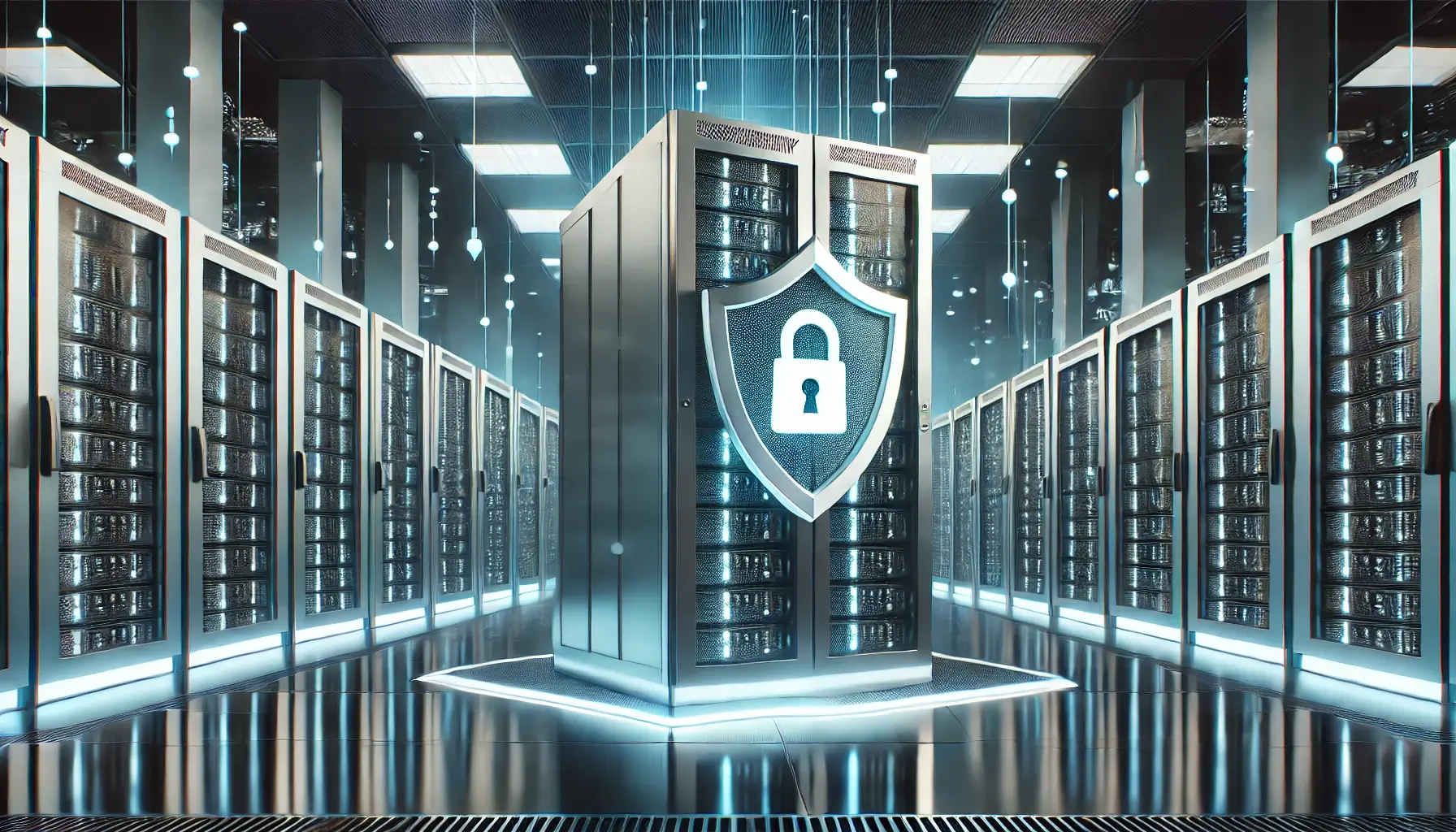In today’s digital age, protecting data and systems from cyber threats is more crucial than ever. While the term “cybersecurity” is familiar to most, many people are less familiar with the concept of “cyber resilience”. Both are essential for any organization’s digital defense strategy, but they play different roles. So, what’s the difference between cybersecurity and cyber resilience?
Let’s explore the key differences between the two, why they are both important, and how they complement each other to form a comprehensive approach to safeguarding your digital assets while ensuring cyber trustworthiness.
What is Cybersecurity?
 Cybersecurity is the practice of protecting computers, networks, software, and data from unauthorized access, theft, or damage. The primary goal is to prevent breaches and minimize risks by building strong defenses. It encompasses a wide range of tools and strategies, from firewalls and antivirus software to encryption and multi-factor authentication. Cybersecurity not only focuses on preventing external threats like hackers and malware but also addresses internal risks, such as accidental data loss or insider threats, by implementing strong policies and protocols. Maintaining cyber hygiene through regular updates and employee education is key to sustaining a secure environment.
Cybersecurity is the practice of protecting computers, networks, software, and data from unauthorized access, theft, or damage. The primary goal is to prevent breaches and minimize risks by building strong defenses. It encompasses a wide range of tools and strategies, from firewalls and antivirus software to encryption and multi-factor authentication. Cybersecurity not only focuses on preventing external threats like hackers and malware but also addresses internal risks, such as accidental data loss or insider threats, by implementing strong policies and protocols. Maintaining cyber hygiene through regular updates and employee education is key to sustaining a secure environment.
Key Components of Cybersecurity
- Network Security: Protects the integrity and usability of your network by preventing unauthorized access or attacks.
- Application Security: Secures your software applications to prevent hackers from exploiting vulnerabilities.
- Information Security: Ensures that sensitive information, such as customer data or intellectual property, is protected from theft or tampering.
- Endpoint Security: Protects individual devices (laptops, smartphones, tablets) that access your network.
Common Cybersecurity Threats
- Malware: Malicious software like viruses, ransomware, or spyware, which can steal or damage data.
- Phishing: Fraudulent emails or messages designed to trick users into revealing sensitive information, such as passwords.
- Denial of Service (DoS) Attacks: An attack that floods a system, making it unavailable to users.
- SQL Injection: A vulnerability where attackers can exploit a web application’s database to execute malicious code.
Why Cybersecurity is Important
In an era where cybercrime is on the rise, cybersecurity acts as a frontline defense to prevent intruders from entering systems. Effective cybersecurity measures can block attacks before they cause any damage, safeguard sensitive data, and protect against financial losses. It’s about building walls around your digital assets and creating a security perimeter to keep attackers out.
What is Cyber Resilience?
 Cyber resilience refers to an organization’s ability to continuously deliver services and operations, even when a cyber incident occurs. While cybersecurity is about keeping attackers out, cyber resilience is about ensuring that when an attack happens, the business can keep functioning, recover quickly, and minimize damage. It involves preparing for the possibility of breaches, ensuring that systems can withstand disruptions, and having a plan in place to recover rapidly. Cyber resilience is crucial because it recognizes that no system is entirely immune to attacks, emphasizing adaptability and operational continuity in the face of evolving threats.
Cyber resilience refers to an organization’s ability to continuously deliver services and operations, even when a cyber incident occurs. While cybersecurity is about keeping attackers out, cyber resilience is about ensuring that when an attack happens, the business can keep functioning, recover quickly, and minimize damage. It involves preparing for the possibility of breaches, ensuring that systems can withstand disruptions, and having a plan in place to recover rapidly. Cyber resilience is crucial because it recognizes that no system is entirely immune to attacks, emphasizing adaptability and operational continuity in the face of evolving threats.
Key Components of Cyber Resilience
- Business Continuity: Ensures that key business processes can continue to operate during and after a cyberattack.
- Incident Response: Involves a coordinated plan for how the organization detects, responds to, and recovers from cyber incidents.
- System Redundancies: Provides backups and failover systems to minimize downtime and maintain operations.
- Crisis Communication: Includes strategies for communicating with employees, customers, and stakeholders during a cyberattack to manage reputation and avoid panic.
- Disaster Recovery Plans: Ensures that systems and data can be quickly restored after a cyberattack or system failure, reducing downtime.
ENHANCE YOUR CYBER RESILIENCE TODAY
Why Cyber Resilience is Important
No matter how strong your cybersecurity defenses are, there is no guarantee that an attack will never succeed. Cyber resilience ensures that, when an inevitable breach occurs, your organization can recover and continue operations. It minimizes financial losses, ensures the trust of stakeholders, and helps protect the organization’s long-term success. It enhances cyber protection by incorporating strategies that go beyond prevention to include recovery and business continuity measures.
| Aspect | Cybersecurity | Cyber Resilience |
|---|---|---|
| Focus | Preventing attacks by building strong defenses around systems and data. | Maintaining operations and recovering quickly after an attack, ensuring that systems can bounce back. |
| Proactive vs. Reactive | Primarily a proactive strategy, aiming to prevent breaches and attacks before they happen. | Involves both proactive and reactive elements. It prepares for incidents, responds to them, and ensures recovery. |
| Short-term vs. Long-term | Often addresses the short-term goal of preventing immediate threats and breaches. | Focuses on long-term recovery, adaptability, and continuous operation, even during a cyberattack. |
| Goal | Create a strong defense that blocks unauthorized access. | Ensure quick recovery and minimal disruption, even if attackers get through. |
Why Both Matter Together
Strength in Combination
While cybersecurity is crucial for defending against threats, cyber resilience ensures that an organization can continue to function and recover quickly in the face of a successful attack. Both concepts are necessary for a comprehensive data protection strategy.
- Cybersecurity is like building a strong wall to keep intruders out.
- Cyber Resilience ensures that if the wall is breached, the organization can minimize damage, maintain operations, and recover quickly.

Real-World Example
Imagine a company that has invested heavily in cybersecurity—firewalls, antivirus software, and strong encryption. Despite this, a sophisticated hacker manages to breach their defenses through a targeted phishing attack. Without cyber resilience strategies, the company might face prolonged downtime, loss of critical data, and damage to its reputation.
However, if the company has implemented cyber resilience measures—like system redundancies, frequent data backups, and an incident response plan—they can quickly recover and restore operations with minimal disruption. Customers might not even notice that a cyberattack occurred.
How DataCore Can Help
DataCore provides a comprehensive approach to both cybersecurity and cyber resilience by ensuring robust protection of your data and systems while also preparing your organization to recover swiftly from any disruptions. With a focus on safeguarding against unauthorized access and threats, DataCore’s solutions build strong defenses to minimize risks.
At the same time, they ensure continuous operations and rapid recovery during and after a cyber incident, enabling businesses to maintain resilience and adapt quickly in the face of evolving challenges. This dual approach helps organizations stay secure while being prepared for the unexpected by implementing a balanced cyber deterrence strategy.
Secure Your Data, Stay Resilient
